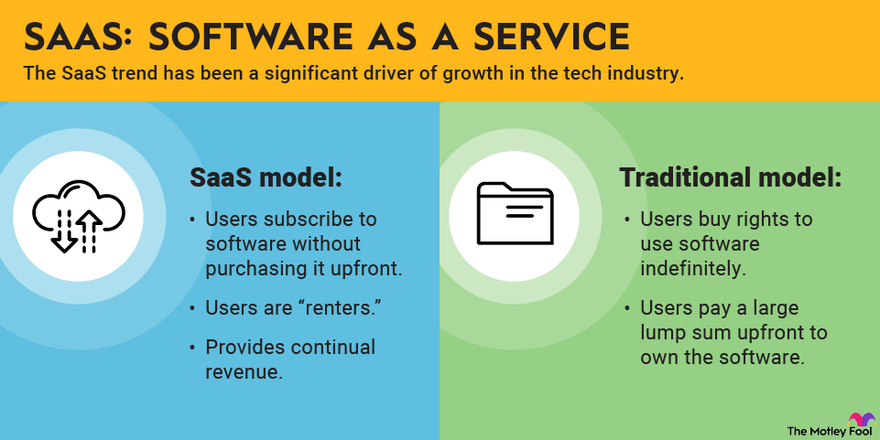What is B2B SaaS?
B2B SaaS stands for Business-to-Business Software-as-a-Service.
B2B SaaS has revolutionized how companies access and utilize software, shifting the paradigm from traditional, on-premise installations to cloud-based services. This evolution has brought about a significant transformation in the way businesses operate, offering unprecedented levels of flexibility, scalability, and efficiency.
In this post, we will break down the concept of what is B2B SaaS, exploring its fundamental principles, how it differs from traditional software models, and why it has become a go-to solution for businesses across various industries.
Whether you’re a startup entrepreneur, a seasoned business owner, or simply a tech enthusiast, this guide aims to provide you with a clear understanding of what B2B SaaS is and why it’s crucial in today’s business environment.
Join us as we explore this innovative service model, uncovering the key features that make B2B SaaS an indispensable tool for modern businesses.
Table Of Contents:
- What is B2B SaaS?
- The Evolution of B2B SaaS
- Key Components of a B2B SaaS Platform
- Benefits of Adopting B2B SaaS for Businesses
- Examples of Leading B2B SaaS Providers
- Challenges in B2B SaaS Implementation
- Future Trends in B2B SaaS
- FAQs – What is B2B SaaS
- Conclusion
What is B2B SaaS?
First off, “SaaS” stands for Software as a Service. Instead of buying and installing software on a computer, you access SaaS products over the Internet. It’s like streaming movies, but for software. No CDs, no downloads – just log in and start using it.
Now, the “B2B” part means it’s all happening between businesses. SaaS companies sell SaaS products to other businesses.
SaaS products are designed to help businesses operate more efficiently. It could be anything from project management and customer relationship management (CRM) to financial software or collaboration tools.
Imagine a company using a SaaS solution to manage its projects and tasks efficiently, or a business employing a CRM system to keep track of customer interactions. That’s SaaS business in action – making business processes smoother and more streamlined.
The Core Principles of B2B SaaS
The SaaS market flips traditional software ownership on its head. Instead of shelling out big bucks upfront, businesses pay as they go with monthly or annual subscriptions. It’s like Netflix but for business applications.
These pricing models are built on cloud computing; which means no more worrying about server space or IT wizards to maintain everything. Companies just log in and get down to business — from anywhere, at any time.
How It Stands Apart From Other Business Models
If we think back to old-school software delivery methods, it was all CDs and lengthy installations. With SaaS solutions? There’s none of that hassle — you’re always using the latest version without lifting a finger for an update.
No more being tied down either. You’ve got freedom since SaaS solutions are available anywhere you have an Internet connection — that means work-from-home days just got easier.
A Real-World Snapshot
To give this some context: imagine SaaS companies like Salesforce automating customer relationships management so sales teams can focus more on selling than data entry. Or Dropbox making file sharing among colleagues look like child’s play, because who has time for complex FTP setups anymore?
In short …
- Say hello to convenience with SaaS subscriptions over hefty one-time payments
- Welcome constant innovation without waiting years between versions
- Cheer for accessibility since working remotely doesn’t mean less productivity
- Enjoy simplicity because getting started should be quick — not another full-time job
Source: The Motley Fool
The Evolution of B2B SaaS
Think of the early days of software.
Software companies sold traditional software solutions in boxes.
And updates? They came by mail. Yes, actual physical mail!
Then came cloud-based software — revolutionizing how we access technology.
Born in the Cloud
SaaS sprouted its wings with the rise of cloud computing.
No more installations or hefty upfront costs to access productivity tools; just log in and get to work.
This model took flight for businesses looking to cut down on IT headaches and focus on growth instead.
Subscription Models
Gone were perpetual licenses locking you into one version forever. Now software solutions are sold on a subscription basis.
Salesforce led this charge, showing that renting software could be smart, flexible, and actually kind of cool.
Mobility Meets Productivity
With smartphones taking over, businesses needed tools that could keep up with a highly mobile workforce.
We’re talking about accessing data from anywhere — a coffee shop, a hotel room, the airport lounge, the beach — making downtime productive time.
Laptops closed, screens tapped open, SaaS was everywhere keeping teams connected even when they’re oceans apart.
Key Components of a B2B SaaS Platform
Think of a B2B SaaS platform as an abundant smorgasbord for software, where you can get all the features and services on-demand without having to own or maintain them.
But what makes up this digital smorgasbord?
Scalability: The Make-or-Break Factor
Growth is the name of the game in business, and your tech needs to keep pace.
Top-notch B2B SaaS companies offer scalability that’s as easy as sliding a bar from left to right.
This means more users and more data storage – no sweat off your brow.
Cybersecurity: Your Digital Guardian Angel
In today’s world, leaving your digital door unlocked is asking for trouble.
Better safe than sorry rings true here with SaaS companies implementing robust security measures.
Salesforce agrees: strong encryption and regular updates are must-haves.
Data Integration: The Glue That Holds It All Together
Isn’t it great when everything meshes together so perfectly? That’s integration magic at its best.
A good SaaS platform allows different software to talk smoothly so data flows without hiccups between systems.
Analytics Tools: Gazing into Your Business Crystal Ball
Knowledge is power, especially when you’re steering the ship. Analytics tools on SaaS platforms can help predict storms or find blue oceans.
Each of these four components plays a critical part in ensuring businesses not only survive but thrive.
Incorporating these key elements helps companies adapt faster, stay secure, and make smarter decisions based on real-time insights.
Benefits of Adopting B2B SaaS for Businesses
Buckle up, because adopting B2B SaaS is like strapping a jetpack to your business operations.
It’s cost-effective — like swapping a luxury sedan for a high-mileage electric car that also dodges traffic jams.
Say goodbye to pricey software updates and hello to automatic upgrades that come standard with most SaaS solutions.
Ease of Access Across the Board
Your team can jump on from anywhere, anytime.
All they need is an internet connection and they can work remotely.
This kind of flexibility means work doesn’t have to stop just because someone’s out of office.
Innovation at Lightning Speed
The fast pace of SaaS development means you get cutting-edge tools before your coffee cools down.
You’re not just keeping up; you’re leading the charge in innovation within your industry.
And as SaaS platforms evolve, so does your company’s ability to stay ahead without breaking a sweat—or the bank.
Focus on Core Business Goals: A Laser Approach
The less time you spend wrestling with tech issues, the more time there is for what really matters.
Businesses using SaaS can focus on growth strategies rather than routine tasks.
Makes Financial Sense Now And Down The Road
Soaring IT costs? Not with SaaS tools in your corner.
You pay for what you use — no hidden fees or surprises when budget time rolls around.
In fact, CIOs are pumping more cash into the cloud than anywhere else in their tech stacks.
Investing here is investing smartly for both today’s and tomorrow’s needs.

Source: Radix
Examples of Leading B2B SaaS Providers
As of 2023, the SaaS industry is worth over $195 billion — increasing in size by 500% over the past seven years. SaaS is the most important tech for achieving business success.
Let’s look at some of the biggest players in the B2B SaaS space.
1. Salesforce: The CRM Powerhouse
Salesforce pretty much wrote the book on customer relationship management with their cloud-based platform.
Their secret sauce? They make it a snap for businesses to manage sales, service, and marketing in one place.
Think of Salesforce as your business’s memory bank, keeping tabs on every interaction with clients and prospects.
This titan has been setting the pace since 1999, showing us all how cloud computing can revolutionize customer relations.
Their impact? A game-changer that lets companies large and small personalize customer experiences like never before.
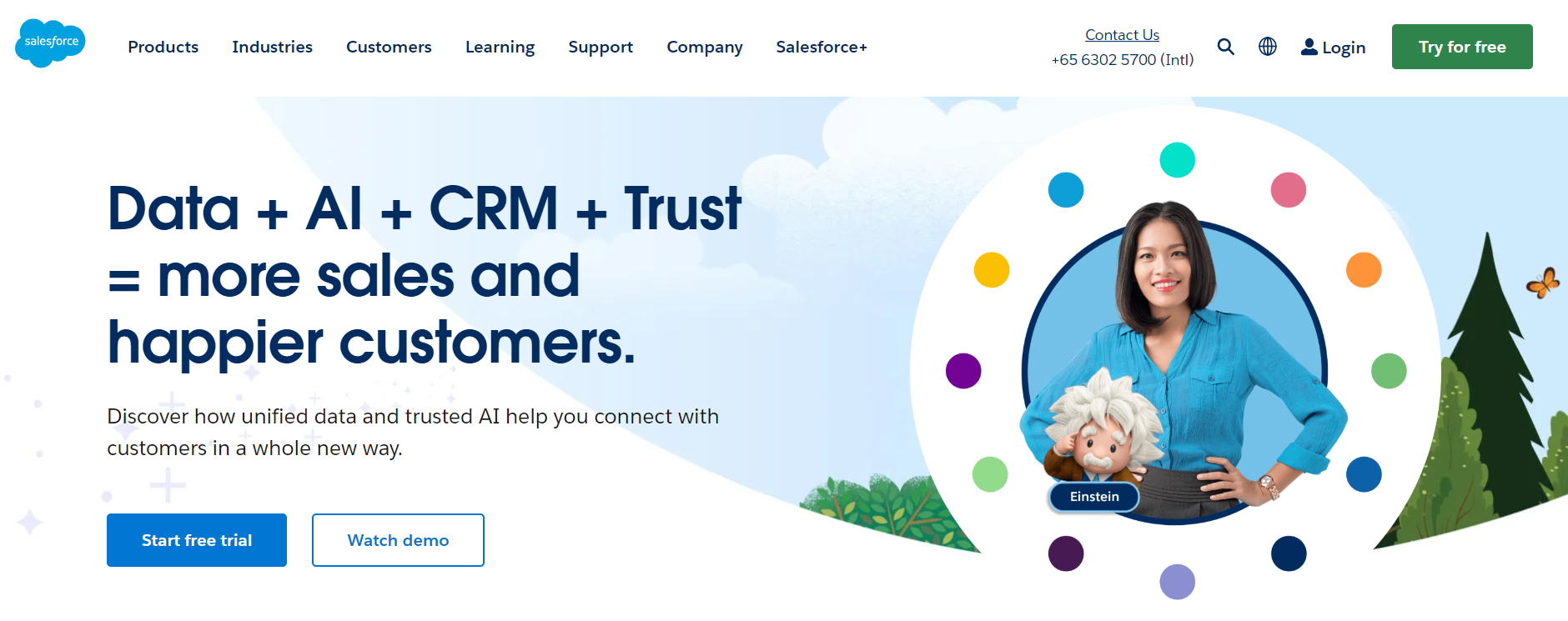
2. Slack: Revolutionizing Team Communication
Ever felt that email was eating up your day? Slack swoops in as the caped crusader against inbox overload.
This tool reimagined team communication by bundling messages into channels — no more digging through emails for that lost attachment.
You’ll find teams syncing up effortlessly thanks to this slick platform.
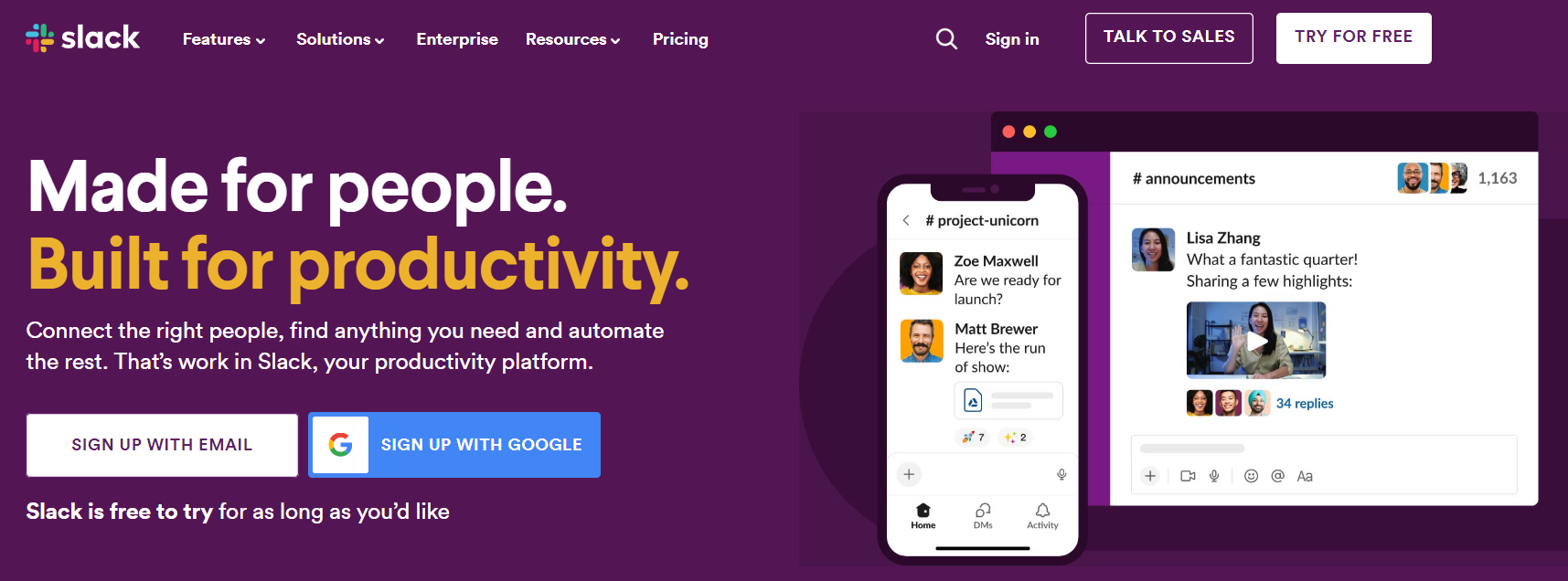
3. Amazon Web Services: The Backbone of Internet Infrastructure
As a powerhouse in cloud computing, Amazon Web Services (AWS) offers a wide range of B2B SaaS solutions.
Companies subscribe to AWS for scalable and flexible cloud infrastructure, storage, computing power, and a plethora of other services, making it a key player in the B2B technology landscape.
Here are some key features that make AWS stand out:
- Scalability
- Computing Power
- Storage Solutions
- Database Services
- Security
- Networking
- Machine Learning and AI
- Serverless Computing
- Monitoring and Management
- Cost Management
These features collectively contribute to AWS’s reputation as a flexible, reliable, and secure cloud computing platform.

4. HubSpot: Inbound Marketing Maestro
HubSpot is all about inbound marketing, sales, and customer service. This cloud-based platform helps businesses attract, engage, and delight customers.
Its primary role is to assist businesses in capturing leads, effectively managing customer relationships, and nurturing potential clients.
Through HubSpot’s sophisticated tools, companies can enhance their web analytics, content management, and SEO strategies — ultimately leading to increased revenue and fostering business growth.

5. BrandWell: Marketing Automation at Your Fingertips
Businesses are constantly seeking ways to optimize their online presence and increase visibility. This is where SaaS tools like BrandWell come into play.
This all-in-one content marketing automation platform is powered by artificial intelligence — providing marketing executives, agencies, and large-scale publishers with a one-click solution for creating top-notch, rank-worthy blog articles within minutes.
To use BrandWell, just input your seed keyword and the long-form AI writer will generate an original, research-backed, 2,000-word blog post that is undetectable and sounds like you.
With a built-in keyword research tool and optimization audits, BrandWell eliminates hours spent brainstorming topics manually and ensures that your content appeals to both your target audience and search engines.
The AI-generated draft comes with an SEO title, meta description, introductory hook, table of contents, H1-H5 headers, bullet points, custom CTA, and an entire suite of SEO tools right inside the text editor.
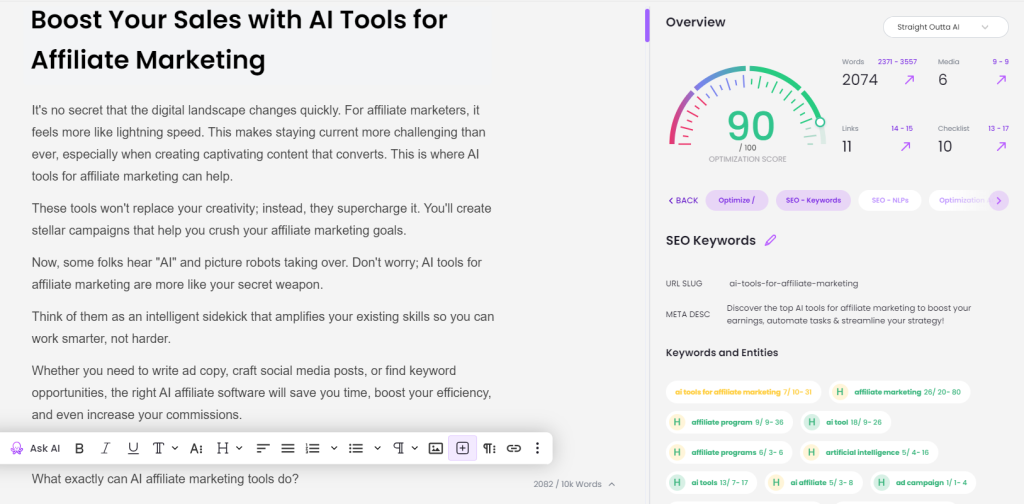
BrandWell is also built with generative AI — its AIMEE chatbot is capable of writing ad copy, landing pages, email marketing campaigns, YouTube video scripts, social media posts, and other types of marketing content that 100% reflects your brand voice.
It’s marketing automation literally at your fingertips!
By combining multiple tools into one, this SaaS marketing solution reduces the time and effort required to produce quality content that drives traffic and boosts SEO rankings.
And here’s more good news: BrandWell will soon be working alongside WorkMind, a fully connected, AI-powered workspace that houses your entire team and company knowledge to help increase productivity. Imagine a product that merges ChatGPT with Perplexity, Notion, Asana, and Slack — that’s what we’re aiming to build.
This is B2B SaaS done right — driving real results for businesses while saving them valuable resources.
The rise of these companies illustrates how B2B SaaS solutions can disrupt traditional business operations by providing more efficient, scalable, and cost-effective alternatives. As technology continues to evolve, we can expect even more innovative applications from this sector.
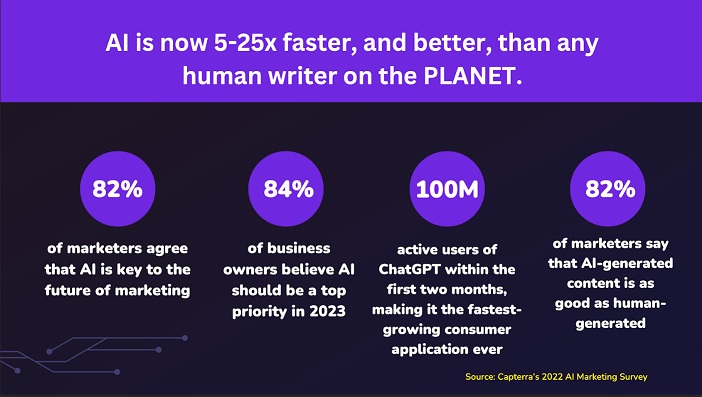
Challenges in B2B SaaS Implementation
While implementing SaaS in your business operations can offer numerous benefits, it’s not without its challenges.
Let’s dive into some common hurdles:
Integration Issues: One of the significant challenges is integrating SaaS applications with existing systems. Ensuring seamless communication between different software solutions, especially if they are from different vendors, can be complex.
Data Security Concerns: Storing sensitive data in the cloud raises security concerns. Businesses need to trust that the SaaS provider has robust security measures in place to protect their data from breaches and unauthorized access.
Customization Limitations: While SaaS applications are often designed to be flexible, they may not cater to all the unique needs of a specific business. Customization options can be limited, and businesses might have to adapt their processes to fit the SaaS solution.
Dependency on Internet Connectivity: SaaS relies heavily on Internet connectivity. If access is spotty, it could disrupt business operations.
Data Migration Nightmares: Transitioning from on-premise systems to SaaS or migrating between SaaS providers can pose challenges. Ensuring a smooth data migration process without data loss or downtime is crucial.
Costs Over Time: While SaaS often offers a pay-as-you-go model, costs can accumulate over time. Businesses need to carefully manage their subscriptions and monitor usage to avoid unexpected expenses.
Vendor Lock-In: Choosing a SaaS provider may lead to vendor lock-in, making it challenging to switch to another provider or revert to on-premise solutions. Businesses should carefully evaluate the long-term implications of their SaaS choices.
Compliance and Regulatory Issues: Depending on the industry, businesses may need to comply with specific regulations and standards. Ensuring that the chosen SaaS solution adheres to these regulations is crucial to avoid legal complications.
User Resistance: Employees may resist the adoption of new software, especially if it changes established workflows. Proper training and change management strategies are essential to overcome this challenge.
Successfully implementing SaaS requires careful consideration of these challenges and proactive strategies to address them. It’s a balancing act between the benefits of agility and cost-effectiveness and the potential drawbacks of integration complexities and security concerns.
Future Trends in B2B SaaS
We’ve seen cloud computing take giant leaps, but let’s talk about what’s around the corner.
AI and Machine Learning Take Center Stage
Say goodbye to clunky software and hello to smarter tools enabled by artificial intelligence and machine learning.
These technologies are getting ready to transform how businesses analyze data, automate processes, and make decisions. They’ll help us spot trends like a hawk spots its prey from miles away — sharp and precise.
Integration Ecosystems Expand
No more living on tech islands. Integration ecosystems will be all about connection.
Your favorite platforms will be working together so that data flows seamlessly across different services.
The Rise of Vertical SaaS
Tailor-made suits always fit best, right? That’s what vertical SaaS is bringing to the table — a custom-fit experience for specific industries like healthcare or finance.
This approach gives companies exactly what they need without any fluff.
Data Privacy Becomes Priority One
In an era where privacy scandals can break businesses, strong data protection isn’t just nice-to-have; it’s essential.
You’ll see B2B SaaS providers doubling down on security measures because trust is now currency — and nobody wants to go bankrupt.
Cybersecurity won’t just be about locking doors; it’ll involve teaching users how not to invite hackers in through open windows too.
User Experience Goes Beyond The Screen
Laggy interfaces? Long gone.
Slick user experiences (UX) aren’t just pretty — they’re profitable.
Websites that work well keep customers coming back for more.
FAQs – What is B2B SaaS
What is an example of a B2B SaaS company?
Salesforce springs to mind, serving businesses with its customer relationship management software.
Can a company be B2B SaaS?
Absolutely. Many companies thrive by providing software services directly to other businesses online.
What does SaaS stand for?
SaaS means Software as a Service, where users access cloud-based apps over the internet.
What is the difference between B2B SaaS and consumer SaaS?
B2B targets enterprises while consumer focuses on individual end-users’ needs and experiences.
Conclusion
So now you know what is B2B SaaS. You’ve witnessed how it can revolutionize companies, not just providing software but much more.
Dive in, and you’ll find flexibility and savings. Scale up with ease; your business won’t skip a beat.
Embrace the cloud, where leading providers are pushing boundaries every day. But watch out—challenges lurk around corners of data migration and privacy.
Ready to set your marketing strategy on autopilot? Sign up for BrandWell today!
Stay one step ahead with WorkMind’s blogs, crafted to deliver real results for students and professionals. See what we have in store for you.